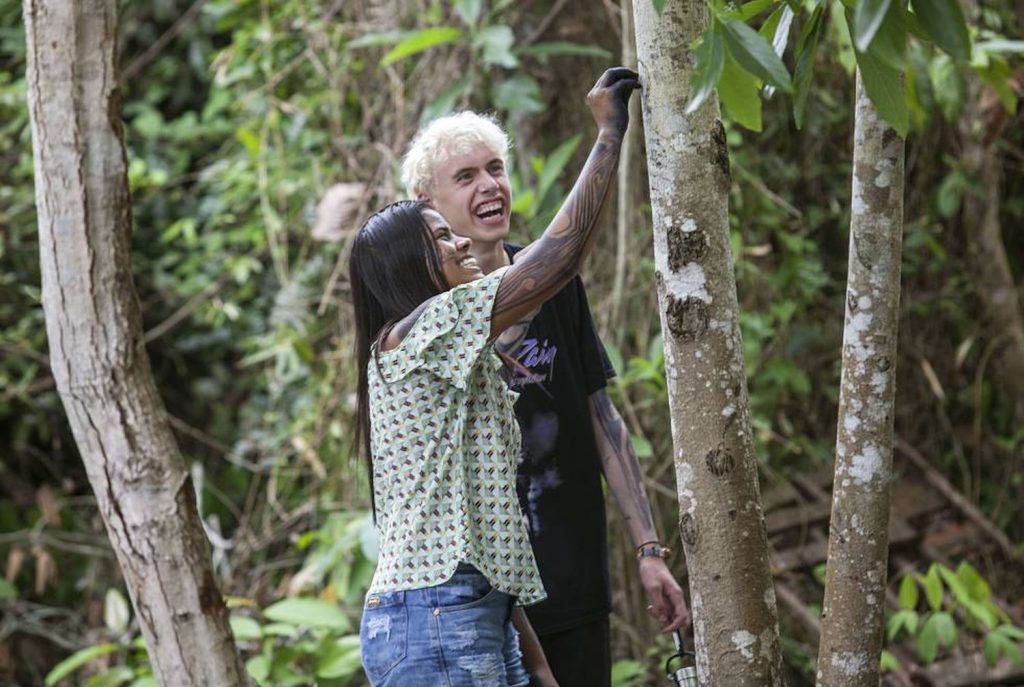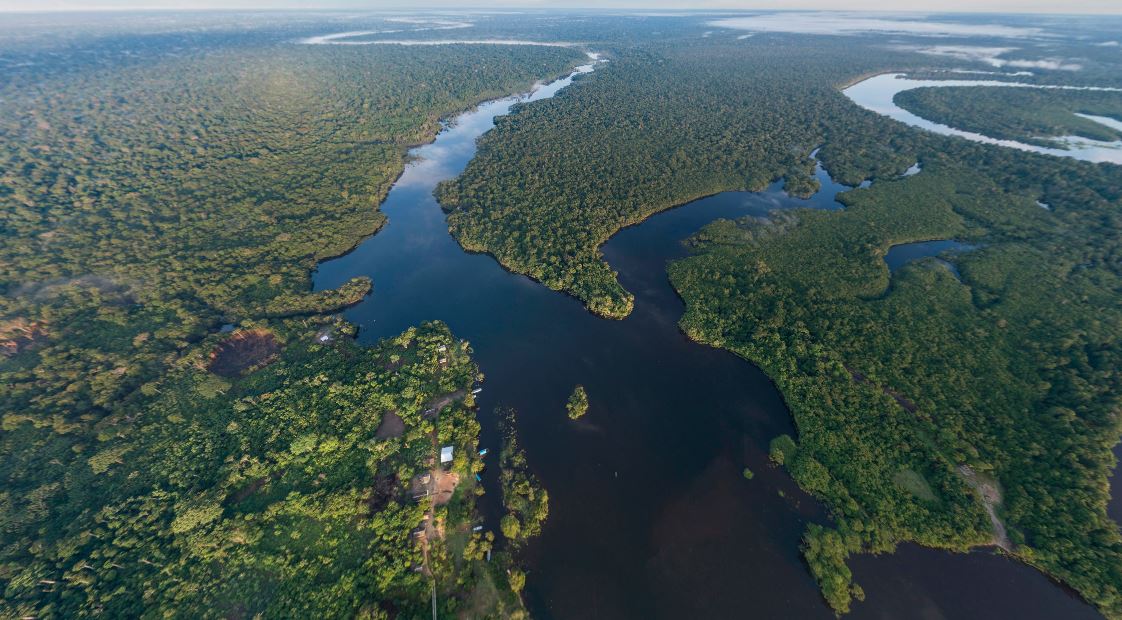RIO DE JANEIRO, BRAZIL – In the mythology of the Yanomami Indians, butterflies came out from the edge of the world to continue life. Fate dictated that, at the moment when five ‘voadeiras’ (as the motorized “airboats” of the Amazonian rivers are called) docked in the Iriri Extractive Reserve, in the Terra do Meio (Amazon), a dozen yellow butterflies would feast in the sky.
It was there that a heterogeneous group of 50 people – from different ethnicities, languages, and nationalities – convened in the heart of the largest tropical rainforest in the world to exchange knowledge on how to protect it and enable the survival of life on the planet.

Jurunas, xikrins, xipayas, kaiapós, and yanomamis, among them the shaman Davi Kopenawa Yanomami, met for two days with young Brazilian and European activists – such as the instigators of the Fridays For Future movement in Belgium, Anuna De Wever and Adélaïde Charlier, or the Russian activist Nadya Tolokonnikova, from the Pussy Riot movement – and scientists such as anthropologist Manuela Carneiro da Cunha, among others.
“I never expected such a meeting to happen”. It was Davi Kapanawa who summarized the common feeling.
In a humble classroom that serves as a meeting place and social center for the community of ‘beiradeiros’ (“riverside peoples”), it began after 10 hours of travel along the Iriri River, an affluent of the Xingu, with a Yanomami ritual and the power of a statement in their language: ‘awei’ (“yes”), a shouted word that sprouts strength and celebration.
To set the tone for the journey, journalist and writer Eliane Brum (columnist for this newspaper), one of the organizers of the event alongside the Socio-Environmental Institute (ISA) and other organizations, recalled indigenous leader and environmentalist Ailton Krenak: “He says that when you feel the sky getting too low, just push it up and breathe. That’s what we’re doing here”.
“But what is this climate thing? What’s it for?” Manoel Assis, or Seu Assis, president of Iriri’s Extractive Reserve, host of the Central World Amazon meeting (which will continue in Altamira between November 16th and 19th), asked pragmatically. He said he “trembled” when he learned that he would host around 50 people from different parts of the world.
The different scientists present discussed the conditions and features of the planet that enable a “stable life on Earth” and explained the gases that humans, industries and the billion and a half oxen on the planet dump into the atmosphere. They commented on the rising temperature of the planet and used the expression that is so much in the lips of youths who follow the Swedish teenager Greta Thunberg: climate change.
In addition, there was mention of the extermination of the peoples of the forest, who suffer at the hands of land grabbers, loggers, farmers and multinationals. Davi Kopenawa recalled the 27,000 Yanomami who live in a territory between Roraima and Amazonas.
“Each village has two shamans, who take care of the universe, the wave of the world. But we’ve fought hard for 20 years. Now it is the youth’s turn, it is the youth’s turn to defend our Mother Earth. You will build another time. We, the leaders of Brazil, are going to give you the arrow for you to fight with the big man,” he said, as he handed a pen to the young activists present. “I am giving you the arrow to strike the heart of the white man”.

“We’ll fight with paper and documents. I have never killed a white man, but they killed my people,” he added. The meeting in the Amazon takes place on the eve of the COP 25 (United Nations Conference on Climate Change), which after Chile’s withdrawal will take place in Madrid.
Raimunda Gomes, a riverside leader, also said she “saw death” closely with the installation of the Belo Monte hydroelectric plant in the Volta Grande do Xingu region. “I know nothing about climate, about climate change, but I know about heat and cold,” she said, who has seen nature around her change. Threatened to death, Raimunda said she was not intimidated by her activism. “The bullet kills one at a time, the problem is the pen, which kills several at once. The person who signed the authorization for Belo Monte shot 40,000 people in one go”.
Socorro Costa e Silva, leader of Barcarena’s quilombo (hinterland settlement), also in the Xingu region, directly challenged foreign visitors: “These youths coming from abroad, learn one thing from me: we want the world’s temperature to decrease, yes. But for this, you need to take care of us, the people of the forest, because we are the ones who take care of the trees, the rivers, and the animals”.
“You have done much more than us and we have you as an example,” said Elijah Mackenzie-Johnson, 15, representing the Youth for the Climate movement in the UK. “We fear that horrible things will happen to us, but we know that these horrible things are already happening to you. And people all over the world are willing to fight with you to protect the Amazon,” added Anuna de Wever.
Socorro’s clear, direct and energetic speech was echoed with more far-fetched words by anthropologist Eduardo Nunes, who explained that “with the very sophisticated knowledge to foster biodiversity in their gardens,” the indigenous peoples of thousands of years ago have shaped today’s Amazon. “This proves that without the people of the forest, there is no forest,” said the scientist.
During the evening, the conversations continued in small or large groups, which ate under the shade of a tree or exchanged ideas and experiences around the fire. It was precisely around a fire that youths gathered to listen to the advice of David Kopenawa.
The shaman reinforced his advice that the youth gather to “build a barrier and force the authorities to respect the Amazon”. The first part of the Central Amazon meeting ended with singing, dancing, hugs, and tears of emotion on the banks of the Iriri River, in a ceremony typical of the Xipaya people, recalling: it takes joy and courage to postpone the end of the world. Awei!
Source: El País

